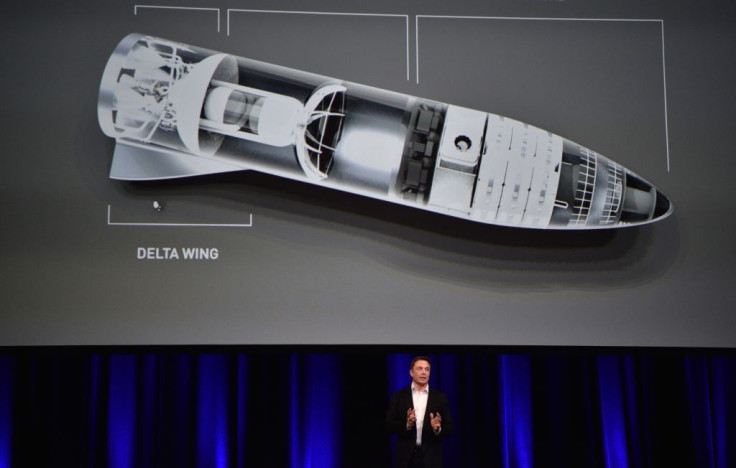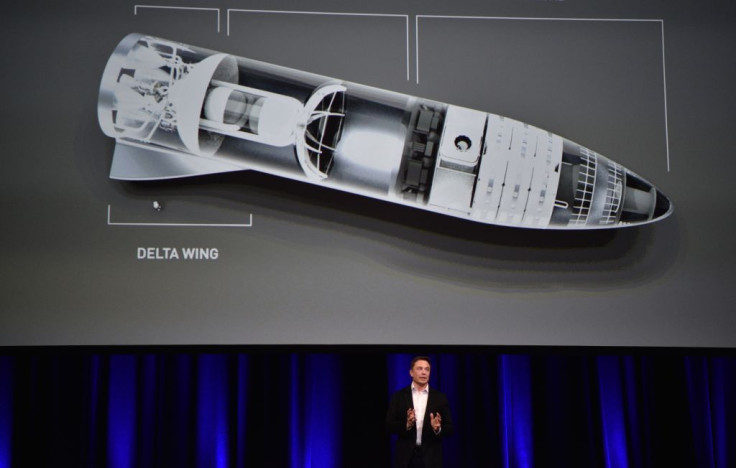SpaceX To 'Cannibalize' Airplane Travel, Can Fly People Around The World In Minutes

Passenger rockets that can fly people to far-flung countries in minutes in “point-to-point flights” will be the future of long-distance air travel -- and a $3 billion market for companies like SpaceX.
Long-distance aircraft flights to countries 10 hours away will be the target market for space companies offering rocket flights that reach low Earth orbit before plunging back into the atmosphere, said a new report by UBS. This method will enable an around the world flight to be completed in less than an hour.
UBS said "high-speed travel via outer space" will be key to boosting the broader space industry worth about $400 billion today to $805 billion by 2030. The Swiss bank believes high-speed travel via outer space will be very lucrative businesses for space flight firms such as Virgin Galactic, SpaceX and Blue Origin.
The report said that in a decade, high-speed travel via outer space will compete with long-distance airline flights and that the latter would be “be cannibalized” by point-to-point rocket flights. Space tourism, another new spaceflight-based market, will be a $3 billion market by 2030, estimates UBS.
“While space tourism is still at a nascent phase, we think that as technology becomes proven, and the cost falls due to technology and competition, space tourism will become more mainstream,” said UBS analysts Jarrod Castle and Myles Walton.
“Space tourism could be the stepping stone for the development of long-haul travel on earth serviced by space.”
Castle and Walton noted “the outlook for the space economy, space tourism and long-haul travel using space has become much more bullish.”
The report said private space companies “are investing aggressively across the space opportunity, and believes access to space “is the enabler to broader opportunities for investment.”
Point-to-point rocket flights will eventually displace aircrafts from long-haul flights more than 10 hours long, said UBS. The bank pointed to SpaceX’s plans to use its massive Starship rocket to fly as many as 100 people around the world in minutes.
SpaceX said Starship will be able to fly from New York to Shanghai (a distance of almost 12,000 km) in 39 minutes, rather than the 15 hours it takes by plane.
UBS estimates there are more than 150 million passengers a year that fly routes longer than 10 hours. Last year, these long-haul routes saw 527,000 routes on airplanes with an average of 309 seats.

“If we assume that 5 percent of these flights in the future are serviced by space at $2,500 per trip, the revenue opportunity as of today would be more than $20 billion per year,” estimates UBS.
“Although some might view the potential to use space to service the long-haul travel market as science fiction, we think...there is a large market.”
More than 10 percent of respondents to a recent UBS survey said they’d choose a spacecraft over an aircraft for long distance travel.
© Copyright IBTimes 2025. All rights reserved.





















